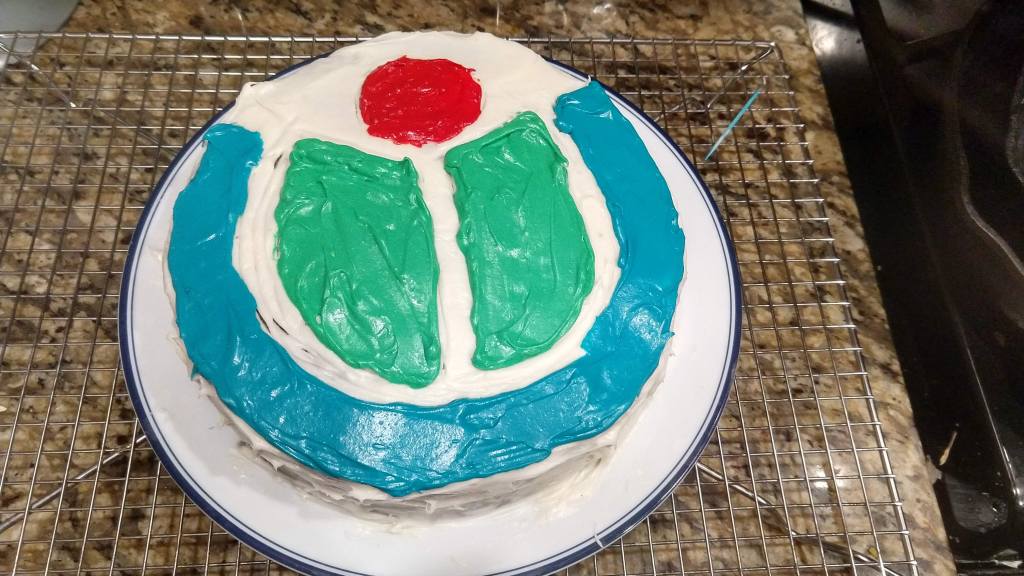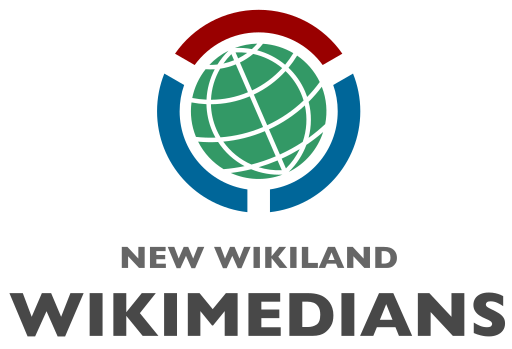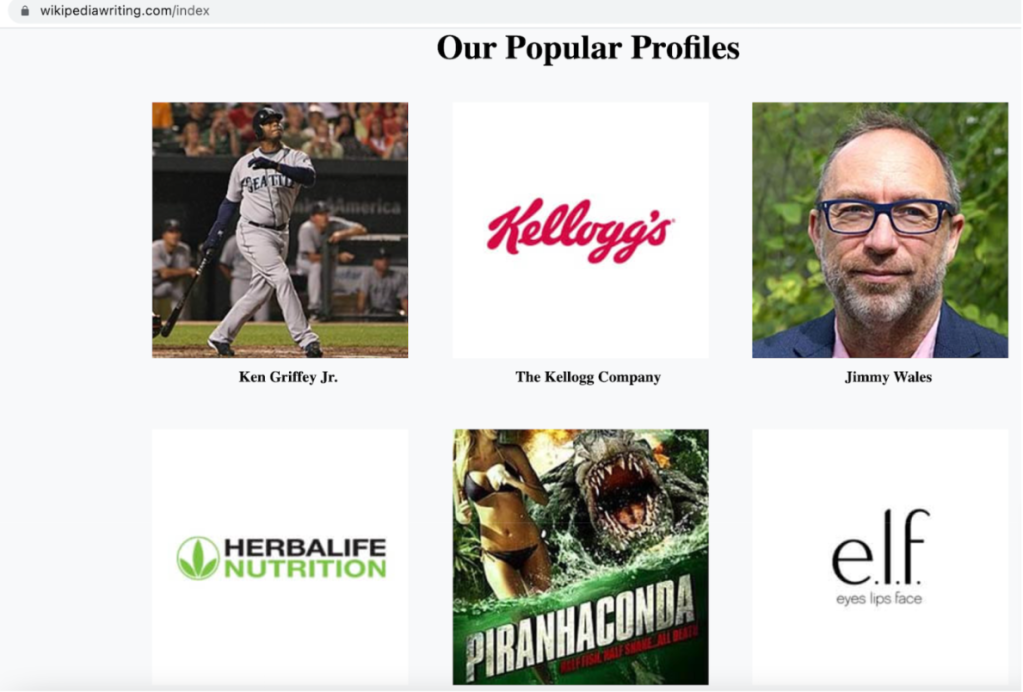Brand Use
Trademark registrations provide the underpinning that enables us to ensure that use of the Wikimedia brands is aligned with the values and interests of the Wikimedia movement. That work includes evaluating requests to use the Wikimedia brands as well as addressing improper uses.
Licencing (Authorized Use)
The use of project names and logos is governed by our trademark policy and visual identity guidelines. Those policies apply for brand uses by Wikimedians as well as third parties. However, Wikimedians have more options for using brand assets to further our shared movement goals.
Wikimedians
Our policies are designed to strike a balance between preventing harmful third-party use of Wikimedia branding and empowering individuals and affiliates to use Wikimedia branding, as per the Wikimedia Brand Portal, to further their work improving the projects and building the movement. We want to minimize ways that barriers to use of the trademarks might interfere with Wikimedians’ everyday work. For example, it is not necessary to check with the Foundation in order to create a remixed version of a project logo to celebrate a milestone, or to host and promote an edit-a-thon. Wikimedians (and everyone else) are also free to make branded t-shirts and other merchandise using project logos, as long as they don’t sell them. Wikimedia Commons has a category of images capturing some of the swag produced by community members over the years. Of course, we never say no to a slice of Wikimedia-branded cake!

The system of Wikimedia movement affiliates also creates additional opportunities for Wikimedians to use Wikimedia branding in their off-wiki work. By being recognized as an affiliate (including signing the appropriate affiliate agreement), a group of Wikimedians receives permission to use a name (and sometimes a logo as well) that incorporates a Wikimedia trademark. For example, the Wikimedia Indonesia chapter is authorized to use “Wikimedia” in their name and the Wikimedia house mark in their logo, whereas WikiDonne, a user group, makes use of the Wikimedia Community logo.


Third Parties
Third parties do not need permission to make “nominative use” of our trademarks. That is the sort of use that is unavoidable if someone is going to talk about one of the Wikimedia projects at all. For example, permission from the Foundation is not needed for a journalist or researcher to publish an article about Wikipedia. Other uses do require permission, however, and we receive many requests each year from third parties wanting to use the Wikimedia marks. Almost all the third party requests we receive are about use of the Wikipedia marks.
When we receive a brand permission request, the Foundation’s legal and Brand Studio teams evaluate it to determine whether it aligns with Wikimedia’s values and whether it furthers our movement goals. One common type of request we receive is to show a character in a film or TV show reading a Wikipedia article. Regardless of the particular media property, this sort of use is generally a good thing: it helps to depict Wikipedia as a resource for finding (usually reliable) information. Those uses tend to be relatively easy for us to approve.
Sometimes, though, a film might want to show a Wikipedia article for a fictional character or event from their story. That can also be okay, but it requires additional review on our part. We ask the filmmaker to send us the fake Wikipedia article that their art department has created for our review. We make sure it is an appropriate depiction of Wikipedia: is there an infobox with a photo, are there blue links to other articles throughout and references at the bottom, etc. The article may be fake, but it should still accurately reflect Wikipedia.
Enforcement (Unauthorized Use)
Maintaining the value of the Wikimedia brands and their ability to function as trademarks requires that we address trademark infringement and violations of our trademark policy. The purpose of enforcement is to avoid confusion and reputational damage. When someone sees the word “Wikipedia”, they should know that it is referring to the Wikimedia encyclopedia project, and not an unrelated product or service. The same applies to names and logos that are similar but not identical to those of Wikimedia projects—they can cause confusion if they lead people to believe that an unrelated website or program is affiliated with Wikimedia.
The purpose of enforcement is to avoid confusion and reputational damage.
Cease & Desist Notices
We learn about most potential trademark infringement in one of two ways: (1) we receive reports from Wikimedians who notice violations, and (2) we receive reports from service providers who we have hired to search for violations online. The primary vendors who help us identify infringement are OpSec Security and our outside trademark counsel. When we receive a report about a potential infringement, we create a case for it and add it to our enforcement queue. The Foundation’s legal team then goes through the queue and evaluates each case to determine if there is indeed trademark infringement and what enforcement action to take. We especially appreciate reports from community members. Although we don’t have the capacity to respond with status updates to all infringement reports that we receive by email, the community’s vigilance for the Wikimedia brands is extremely helpful!
There are three primary reasons that a case evaluation may conclude that enforcement is not appropriate.
- The case may involve the use of marks that are not sufficiently similar to Wikimedia’s to constitute infringement.
- The use of Wikimedia’s marks may be allowed for one of the reasons described in Section 3.6 of the trademark policy, such as news reporting or satire.
- The most difficult to determine: sometimes, the cost of effective enforcement outweighs the potential harm caused by the infringement. We want to avoid the Streisand effect—unintentionally drawing more attention to a potential infringement as a result of our enforcement attempt
When we do enforce against infringement by sending cease and desist notices, we tailor our approach and messages depending on the particulars of the case. We are able to handle many of the cases in-house, but we also work with OpSec Security to extend our capacity. For example, we might outsource a case where a third party has registered a typosquatting domain name like wikpedia.org and put up advertisements on it. However, if the case seems to involve good faith and unintentional infringement, such as due to a lack of knowledge of the trademark policy, then we will want to handle sending any notices ourselves.
We want to inform the recipients about proper brand use and allow them to address our concerns in a minimally disruptive way.
We do what we can to adapt the cease and desist notices based on the particular case and to draft them in a way that is consistent with Wikimedia values. We want to inform the recipients about proper brand use (they often are unaware of how trademarks work) and allow them to address our concerns in a minimally disruptive way. Our approach is quite successful, at least when we are able to reach an actual person. The recipients often admire and appreciate Wikipedia and let us know that they did not intend to create confusion with the Wikipedia brand. In these cases, our brand equity plays a protective role.
Most of the trademark infringement we encounter is online, and it often involves a website’s domain name. For infringement involving domain names, we have the option to escalate cases to the Uniform Domain-Name Dispute-Resolution Policy (UDRP) process. The UDRP process is a streamlined and low-cost (compared to a full lawsuit) approach to resolving domain name disputes, without needing to purchase a domain name from the infringing party and thereby reward their infringement. We have filed a total of 74 UDRP complaints since 2009, resulting in 118 domain names being transferred to the Wikimedia Foundation and 7 canceled domain name registrations.
Most of the domain names we escalate to UDRP complaints have malicious content, advertising, or are operating in bad faith. One example of a UDRP case won in 2022 was for the domain name wikipediawriting.com. The site was advertising services for paid editing in a way that not only infringed on Wikipedia trademarks, but also appeared to violate our Terms of Use. They may have even misrepresented their work to potential clients, such as by advertising that they were involved in creating the profile of Wikipedia founder (and member of the Wikimedia Foundation Board of Trustees) Jimmy Wales.
A UDRP complaint was issued against wikipediawriting.com

Trademark Oppositions
In addition to responding to cases of active trademark infringement that are reported to us, we also monitor for applications by third parties to register trademarks that are similar to the Wikimedia marks. Often, applications to register trademarks are filed on an “intent-to-use” basis, before there is any live, public use of the mark to point to. We have the opportunity to oppose the registration of any marks that are confusingly similar to ones that we have registered.
Preventing the registration of confusingly similar marks is important to maintain the strength and value of Wikimedia’s identity in the world.
The opposition process, administered by national trademark offices, allows us to address concerning applications without needing to incur the full cost of a trademark infringement lawsuit. Preventing the registration of confusingly similar marks is important to maintain the strength and value of Wikimedia’s identity in the world. In the most extreme cases, such as attempts to register marks identical to ours, it can be an attempt to trade on the trust and goodwill associated with the Wikipedia brand in order to benefit an unaffiliated product or service that is not contributing to the Wikimedia movement. Often the applied-for mark is not identical to a Wikimedia mark, but is clearly based on “Wikipedia”, the stylized Wikipedia wordmark, or the puzzle globe. Such marks treat the Wikipedia brand as a generic building block for their own branding, rather than as trademarks associated with the Wikipedia project. Allowing those marks to register would weaken the Wikimedia trademarks by making it more difficult to oppose the registration of similar marks and potentially more difficult to register additional Wikimedia trademarks in the future.
In some cases, we are able to negotiate with third parties to find a mutually agreeable solution. We contact them after seeing their trademark applications and ask them not to use the marks as depicted in their applications. They may be able to make enough modifications to their name or logo design so that we are no longer concerned about the similarity with the Wikimedia marks. These negotiations often conclude with a coexistence agreement between the third party and the Wikimedia Foundation. Such agreements help us manage any potential future disagreements, and they help to prevent either of our marks from weakening the other’s.
Photo credits
Artur "WarX" Fijałkowski